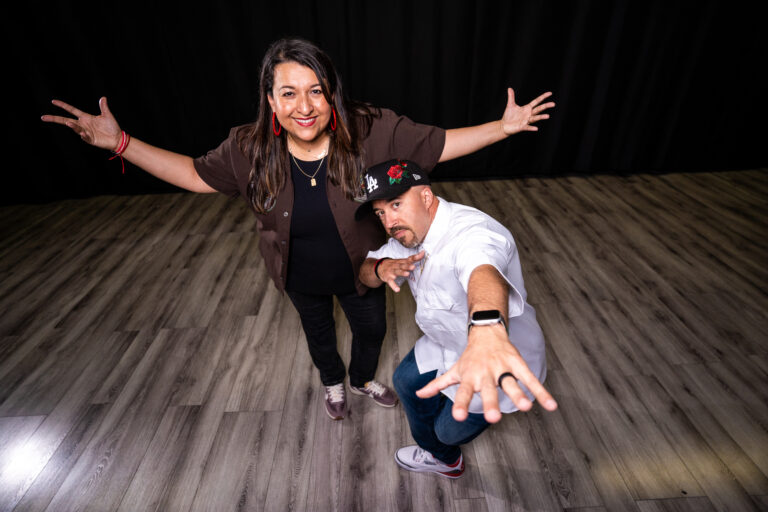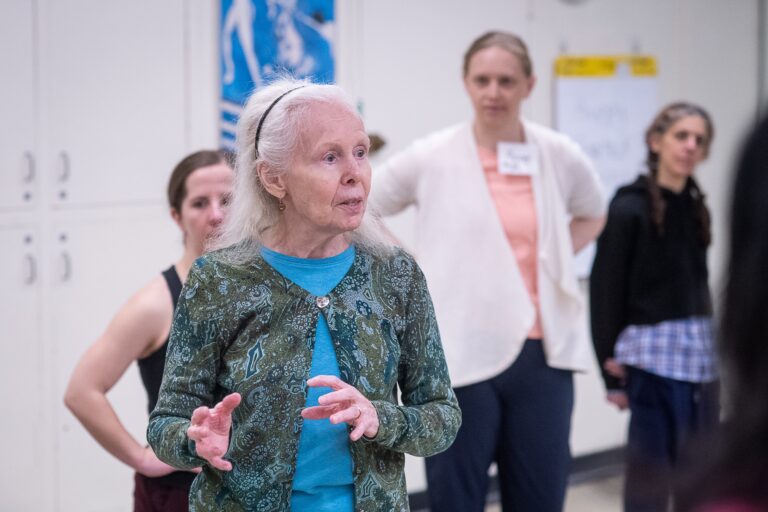Help your students understand the body’s most vital fuel.
It’s a warm summer day, and even with the humidity outside, your students are pushing through, eager to impress and improve. One dancer starts to look a little flushed and, in an instant, she faints. Despite the most equipped teacher’s best efforts, dehydration is a constant danger, particularly in summer months. By understanding the science behind hydration, you can help protect your students’ health and help them perform at top capacity.
When dancing, students’ bodies release sweat in order to regulate body temperature. “It pulls water out of the cells, and the cells actually shrink, so they can’t produce energy as well,” says Karyn Baiorunos, nutritionist for the Kirov Academy in Washington, DC. “Dehydrated dancers feel very tired, so they lose their posture and form, which often leads to injury.”
Tish Cordova, artistic director of the Virginia Ballet Company and School, notices the most problems with dehydration in the weeks transitioning into the summer program. “They’re in the building a lot longer, and when it starts getting very humid outside, that humidity kind of creeps up on them,” she says. Despite having air-conditioning, the studios get warmer and teachers have to remind students to drink often. When a student does become dehydrated, a teacher may notice their flushed face first.
“Flushing means that the body is trying to get rid of heat, so they are losing water,” says Baiorunos. Teachers should also look at the quality of the student’s skin to see if it is dry, ask the student if she has a headache or is dizzy, and, most importantly, pay attention to whether or not she seems tired or sluggish. “The number-one reason for fatigue is being dehydrated,” says Baiorunos. Dehydration can also cause chills, sunken eyes and, at its worst, muscle cramping and increased heart rate.
So how much water does the body need to sustain energy? According to Marie Scioscia, a registered dietitian who works with The Ailey School, a good barometer is to divide a student’s weight in half. “This is the number of ounces of fluid they should take in,” she says. “So a 120-pound dancer should consume about 60 ounces of fluids a day.” While this simple calculation is helpful, it doesn’t take into account the dancer’s level of exercise. “During exercise, students should be encouraged to bring a thermos of water and drink one-half to one cup every 20 minutes or so during class,” she adds.
Because everyone has a different metabolic rate and sweats different amounts, the color of a dancer’s urine can be a good indicator of whether or not her intake is enough. “If her urine is dark yellow, then she’s not drinking enough water. But if it is a nice pale yellow, then she’s doing a really good job,” says Baiorunos.
While they feel it is unhealthy for a student to weigh herself daily, both Scioscia and Baiorunos agree that weighing once before and after a typical day of dancing can give her valuable insight into how much water she’s losing, and therefore needs to replace. “For every pound she’s lost, she’s actually down two cups of water,” says Baiorunos, emphasizing the importance of hydration after dancing as well. “This helps students understand that day-to-day fluctuations in the scale really just reflect fluid shifts,” adds Scioscia.
Students will dance more safely and productively in class if their hydration needs are met, but other factors, such as maintaining classroom decorum and expensive flooring, often pose a challenge. Trips to the water fountain can feel like a time-wasting distraction. And liquids spilled on expensive marley floors may cause damage. At Virginia Ballet, Cordova and her teachers encourage students to use closed-top water bottles and leave them just outside the classroom door, so they are always at arm’s reach but don’t spill on the floors. “It is all part of the training process,” says Cordova. “You need to help students be aware of what their bodies need.” DT
What should dancers drink?
Choosing between water and one of the dozens of sports drinks out there can make staying hydrated even more complicated. “The rule of thumb is that, if you’re exercising for less than an hour, water is the absolute best thing you can drink,” says nutritionist Karyn Baiorunos. While water is ideal, she adds that if a student will drink more with vitaminwater or Gatorade, it should still be encouraged.
“Any athlete exercising continually in an aerobic way could benefit from a sports replacement drink,” says Marie Scioscia, a registered dietitian, “something that is going to give some carbohydrates for energy and other electrolytes, such as sodium, that are also important.” She recommends looking for drinks that have carbohydrate concentrations between 4 and 8 percent.
Juice diluted to equal parts juice and water can be a good substitute for a sports drink, but it should be used after class—some dancers complain it causes stomach aches during class activity. “Orange juice has a nice amount of potassium in it, so that is a good way to go,” says Baiorunos. She does warn, however, that juice on its own is not a good hydration fluid. “The sugar level is so high that the water can’t be absorbed into the body at the pace that it should be, so drinking doesn’t make them feel better,” she says. “It may even make them thirstier.” Coffee and caffeinated drinks such as green tea should also be avoided because, as diuretics, they will make dancers urinate more.
Kathleen McGuire is a Pittsburgh, PA–based freelance writer.
Photo: ©iStockphoto.com/Neustockimages




